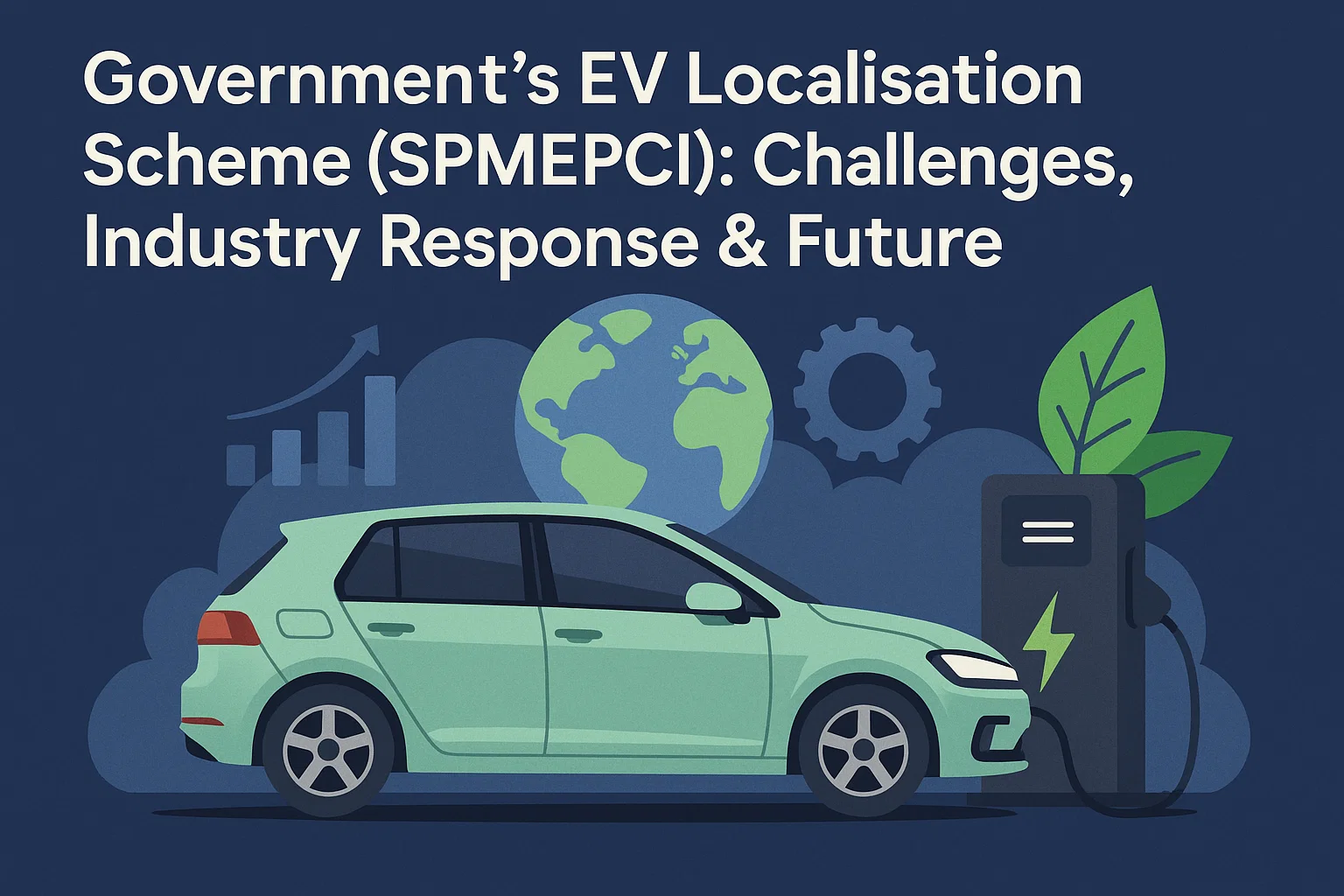India’s Battery Waste Challenge & Recycling Solutions
As India pushes for green growth, battery waste rises. Learn why balancing regulation, informal sector inclusion, and innovation is key to solving it.

Introduction: India’s Battery Waste Management
As highlighted in Arun Goyal’s article, The Missing Link in India’s Battery Waste Management (The Hindu, 5 August 2025), India is racing towards a cleaner, greener future. Across the country, electric vehicles are replacing petrol and diesel cars, and renewable energy is powering homes, schools, and factories with the help of massive battery banks. But while these changes offer hope, they also create a difficult problem: what will India do with the enormous number of old, worn-out batteries that are piling up? If dumped carelessly, these batteries can leak harmful chemicals into the environment and waste valuable metals like lithium and cobalt, which India currently imports at great cost. Goyal argues that the best solution is stricter government rules and higher payments to formal recyclers. However, this essay presents a counterview: instead of depending mainly on government controls and increased recycling prices, India should use flexible, market-based solutions that include and support its informal recycling sector. This approach will help create a cleaner, safer future while protecting jobs and encouraging innovation.
Regulating the Battery Boom
Recognising the dangers, the Indian government has stepped up with new laws designed to manage the growing flood of battery waste. The 2022 Battery Waste Management Rules aim to make companies responsible for collecting and recycling their old batteries, not just selling new ones. This approach, called Extended Producer Responsibility or EPR, means manufacturers must think about what happens to their products after customers are done using them. The idea is simple: if companies have to pay for recycling, they will be more careful about how their batteries are designed, sold, and disposed of. But the cost of proper recycling is not small. It requires special factories, careful handling, skilled workers, and technology to recover precious metals without harming the environment. Right now, the price paid to recyclers—known as the EPR floor price—is not high enough to cover all these costs. Many experts, such as Arun Goyal (2025), worry that unless this price is increased and rules are made stricter, India’s battery recycling system will fail. Informal recyclers, who may not follow safety or environmental guidelines, will continue to dominate, putting everyone at risk.
The Price Debate
At first glance, Arun Goyal’s solution seems logical—if recyclers are paid more, they will be able to do a better, safer job, and everyone wins. Yet, some people think this is only part of the story, and that raising prices could create as many problems as it solves. Setting a high minimum price for recycling can backfire. If it is too high, it can create opportunities for cheating, where people find ways to make easy money without actually recycling. On top of that, companies might simply pass on their increased costs to customers by raising the prices of their products. For millions of Indian families, even a small price hike on a new mobile phone or electric scooter can make a real difference. There is also a question of fairness. India’s wages and operational costs are much lower than in Europe or the UK, so comparing prices directly does not always make sense. Plus, the metals inside used batteries are already valuable on the global market—sometimes, recycling pays for itself if the system is set up right.
The Informal Recycling Network
Another part of the story often overlooked is the role of India’s vast informal sector. Across the country, thousands of small-scale recyclers—sometimes entire families—make a living collecting and dismantling old batteries and electronic devices. They are quick, efficient, and have built up impressive networks for finding waste wherever it is hiding. In many cities, informal recyclers are actually better at collecting old batteries than large companies. The trouble is, working conditions can be unsafe, and there is little protection for workers or the environment. Some experts fear that if new rules make recycling too expensive or complicated, these workers could lose their jobs, and India’s impressive collection rates could fall. Instead of trying to shut them out, many argue that it makes more sense to support, train, and connect informal recyclers to bigger, safer recycling facilities. This way, India can benefit from both grassroots efficiency and proper safety standards.
A Market in Motion
As India tackles these challenges, another big force is shaping the battery waste story—technology. In the past few years, new battery designs have emerged that are easier and safer to recycle. Small businesses and startups are inventing clever machines that can break down old batteries quickly and cheaply, sometimes even in small local workshops instead of giant factories. With this kind of innovation, the costs and challenges of recycling could drop rapidly, making strict government price controls less useful or even out of date. Rather than tying everyone to one set way of doing things, some believe it is better to let businesses compete and create new solutions. If the government sets clear targets for how much battery waste needs to be recycled and keeps a close eye on results, then companies and workers can figure out the best way to get there—using technology, local know-how, or a mix of both.
Striking a Balance
So, what is the right path for India? The answer likely lies in balance. A fair system would combine good rules with smart market incentives, encouraging both big companies and small recyclers to do the right thing. Instead of relying on a fixed price for recycling, India could use a flexible system of credits and rewards, making it profitable for anyone—formal or informal—who helps collect and safely recycle old batteries. The government could offer extra support for recycling the most dangerous or difficult kinds of batteries, while also making sure that the poorest consumers are not priced out of buying green technology. At the same time, investing in research and supporting startups would help keep India at the cutting edge of recycling technology. Above all, the system should be built to fit India’s unique needs, drawing on the country’s strengths in innovation, local knowledge, and the massive informal workforce that already keeps much of the waste moving.
Turning a Challenge into an Opportunity
Summing up, the question of how India will deal with its growing mountain of battery waste is not just about avoiding pollution or saving money on imports—it is about building a fair, creative, and inclusive future. If India can get this right, it could become a world leader in battery recycling, creating new jobs, protecting the environment, and powering its growth with homegrown solutions. This is not a problem with just one answer. It is a challenge that needs teamwork from the government, businesses, informal workers, and everyday people. By focusing on real results, trusting the power of local solutions, and welcoming innovation, India can turn its battery waste problem into a powerful engine for green growth and a cleaner tomorrow.
Subscribe to our Youtube Channel for more Valuable Content – TheStudyias
Download the App to Subscribe to our Courses – Thestudyias
The Source’s Authority and Ownership of the Article is Claimed By THE STUDY IAS BY MANIKANT SINGH



